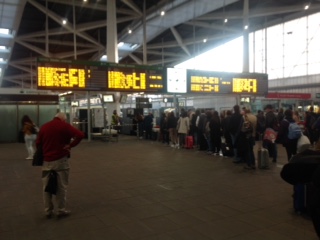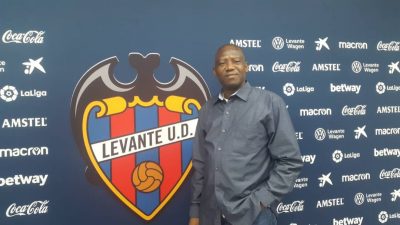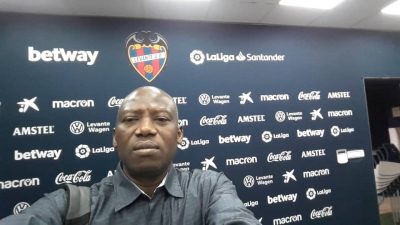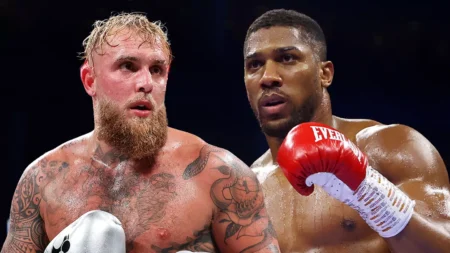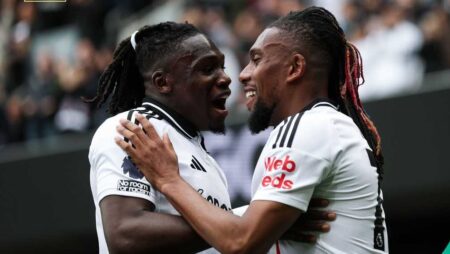BY THE time you read this, I will be in Madrid for the El-Clasico on Sunday. It will be the climax of the media tour organized by Laliga for selected journalists from around the world.
After our visit to Villarreal on Wednesday, we (the press corp) spent the rest of the evening on a city tour of Valencia, the third largest city in Spain after the capital Madrid and Barcelona.
Also Read – Laliga Live: Part One- At Last, “Mr. Nigeria” Arrives in Valencia, Villarreal
There are historical accounts of how large parts of present day Spain used to be under the control of Muslim dynasties many centuries ago before they were overthrown and exiled by a Christian Emperor. We saw evidence of this in the old quarters of Valencia where the influence of Arab culture and architecture are heavily pronounced.
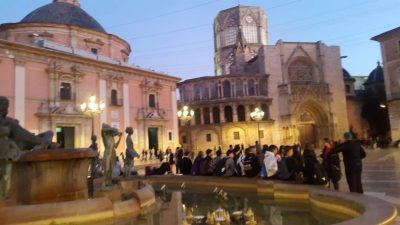
We visited a church that was converted into a mosque and was later converted back into a church as the city exchanged hands between Christian and Muslim rulers. The tower of the today’s Valencia Cathedral was the minaret of an old mosque. In fact, the name Valencia was reportedly adapted from the its former Arab name, Balansiyya.
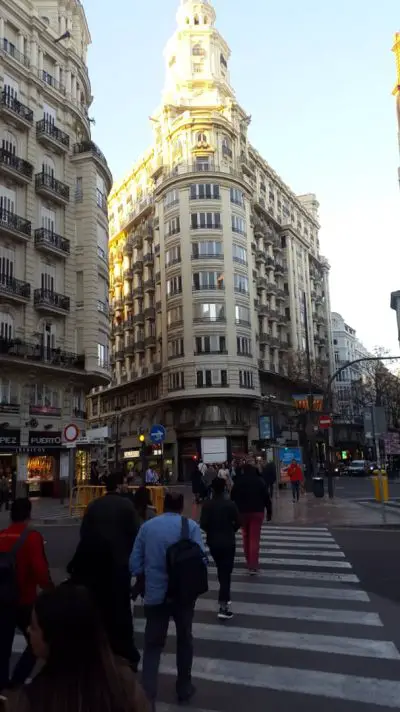
Also noticeable in downtown Valencia is the old Roman playground which today plays hosts to bull-fighting. Bull-fighting remains a very popular sport in Spain, never mind the dangers involved for the bull-fighters.
However, the most remarkable story told by our tour guide, the very jovial Diego Egea, is how the city of Valencia emptied its River Turia of its whole water and diverted it as recently as 1957 after Turia caused a disastrous flood. In place of that riverbed today is the Garden of Turia, a 10 kilometer public park that runs through the heart of the city. Just imagine draining a whole river of water and planting rows and rows of trees and flowers in its place. That is the remarkable story of the Garden of Turia.
I had missed the visit to Valencia Football Club on Tuesday because I got trapped in Lagos when my original flight was cancelled. When I finally arrived on Wednesday, I only met the tour to Samuel Chukwueze’s Villarreal CF mid-way. Waking up in Valencia for the first time on Thursday morning, I was finally going to attend my first full visit to another Laliga club side.
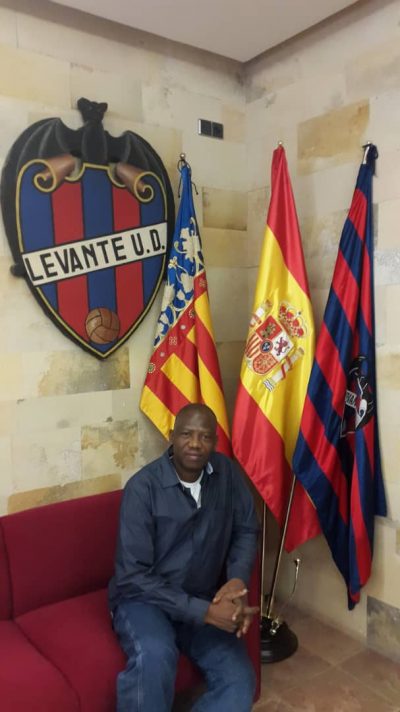
Welcome to LEVANTE!
Levante UD are the less illustrious cousins of Valencia CF. Both clubs reflect the city colours and carry its legends (bats and frogs from River Turia) in their emblem and uniform, but Valencia are the bigger, richer and more successful Laliga club.
Whenever they meet in the local derby, however, size and bank balance go out of the window and it’s a big battle for pride and bragging rights. It’s the equivalent of Liverpool versus Everton in the English Premier League.
In order to gain a foothold in the city of Valencia, Levante have been giving out free season tickets to about 20,000 fans every Laliga season in order to fill up its 25,000 capacity stadium and make it inviting for sponsors and attractive to television. It’s a strategy that has worked because many in the city now introduce themselves as Levante supporters although they were born and grew up as Valencia fans. In the years ahead, the Levante Management plan to gradually convert those free season ticket holders to paid season ticket holders.
Watch Video: Laliga Good Hunting Ground For Nigerian Players –Alao reports
Personally, I was fascinated by the visit to Levante because of its Nigerian connection. Former Super Eagles striker, Obafemi Martins stopped over here in the 2012/2013 season as he marched from Club to Club in his storied career which has taken him to virtually every part of the world. More recently in the 2018/2019 Laliga season, Nigerian midfielder Moses Simon also featured for Levante.
On a visit to the club’s library, (there isn’t much in their “trophy room”), I searched for pictures or old jerseys or just anything to show that the Nigerians were part of the folklore, but there was nothing. All I could do was record a video showing the home team dressing room where Martins and Simon would have dressed up before turning out for for Laliga games. And when I went out into the Stadium, I did another video right on the pitch which was quite a privilege. Ordinarily, European club sides do not allow visitors onto their first team football pitch. It is their hallowed chamber. It is guided jealousy. (Go to www.completsports.com and www.naijasuperfans.com to watch my videos).
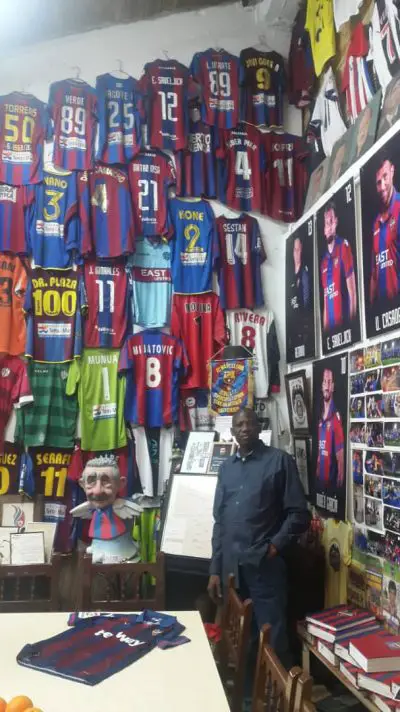
I opened this episode of my Laliga travelogue with the story of Arab Muslim influence in the foundations of Valencia. Well, I might just as well close it with another Arabian connection.
In 1989 when Saudi Arabia hosted the FIFA World Youth Champioship (now renamed the FIFA U-20 World Cup), one of the biggest stories of the tournament was how the Nigerian team led by Nduka Ugbade came back from a 4-0 deficit to equalize and then eliminate a world super power, the Soviet Union (Russia), in a penalty shoot-out. That victory is recorded in Football folklore as the “Miracle of Damman,” where the match was played.
The Nigerian boys went on to beat another super power, United States of America (USA) 2-1 in the semi-finals but they could not win the trophy as they lost 2-0 to Portugal in the final. The exploits of the Nigerian team caught global attention, such that after the tournament, football scouts swarmed on them. Somehow, most of the players ended up in Spain and so began Nigeria’s romance with Spanish football.
“Headmaster” Mutiu Adepoju, who today is the Laliga ambassador in Nigeria, was a member of that historic team. He recalls that team captain Nduka Ugbade was the first to arrive in Spain at Castellon soon after the FIFA tournament in 1989. Wingers Dimeji Lawal and Christopher Ohenhen moved to Castilla, Real Madrid’s Team ‘B’ where they were soon joined by midfielders Mutiu Adepoju himself and Christopher Nwosu. But Nwosu left for Belgium not long after.
The impressive showing by this first wave of Nigerian talent in Spain opened the door for their compatriots as the likes of Finidi George (Real Betis and Real Mallorca), Emmanuel Amuneke (Barcelona), Wilfred Agbonivbare (Rayo Vallecano), (Victor Ikpeba (Real Betis) and Rashidi Yekini (Sporting Gijon) followed in the 1990s. Today, it is the turn of Samuel Chukwueze (Villarreal), Kenneth Omeruo and Chidozie Awaziem (Leganes), Azeez Ramon (Granada), Oghenekaro Etebo (Getafe) and the relatively little known Emmanuel Apeh (Celta Vigo) to keep the flag flying. Thanks to the Arabian Connection for setting the ball rolling.
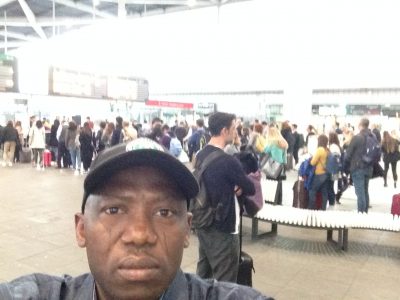
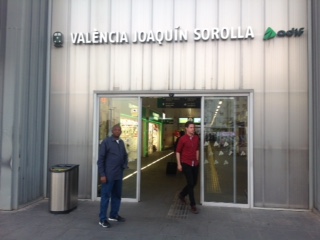
I’m at the Valencia train station as I finish writing this. Diana, remember her? Oh, that’s the lady who met me on arrival at the Valencia airport. She says the trip to Madrid by fast train will take us about two hours. Join me in the Spanish capital for the next installment of my travelogue. The Laliga El-Clasico beckons…..
